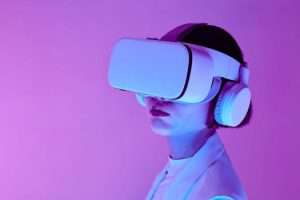How AI Is Enhancing Accessibility for Students with Disabilities
Technology has always been a game changer when it comes to improving accessibility for individuals with disabilities. And with the advancement of Artificial Intelligence (AI), the future is looking much brighter for students with disabilities. AI is transforming learning environments and enhancing accessibility in ways that were previously unimaginable. From providing personalized learning experiences to creating inclusive classrooms, AI is revolutionizing the education system for students with disabilities. Let’s dive deeper into how AI is changing the game for these students.
The Power of Personalization
As every student with a disability faces unique challenges, personalized learning is crucial for their academic success. However, it can be challenging for teachers to create individualized lesson plans for each student. This is where AI steps in. AI algorithms are designed to analyze data and provide personalized recommendations based on a student’s learning style, abilities, and difficulties. This allows students with disabilities to receive tailored support, making their learning experience more inclusive and efficient.
Assistive Technologies
Assistive technologies have been around for a while, but AI is taking them to a whole new level. These technologies use AI-powered tools like text-to-speech, speech-to-text, and predictive text to support students with learning disabilities. For instance, students with dyslexia can benefit significantly from AI-powered assistive technologies that can identify and correct spelling and grammar errors. These tools are also helpful for students with physical disabilities as they can use speech recognition technology to interact with their devices without using their hands.
Empowering Independent Learning
One of the significant challenges for students with disabilities is the need for constant support and assistance in the classroom. With AI, students can now access online learning platforms that are equipped with AI-enabled assistive tools. They can work through lessons at their own pace and receive immediate feedback, eliminating the need for physical support. This empowers students to take control of their own learning, promoting independence and boosting their self-confidence.
Inclusive Classrooms
Traditionally, students with disabilities have faced obstacles in receiving quality education due to a lack of inclusive and accessible learning environments. But AI is changing the narrative by making traditional classrooms more inclusive. AI-powered face recognition technology can identify students with disabilities and adjust the classroom environment accordingly. For instance, lighting and temperature can be modified for students with visual impairments, and audio amplification can be provided for students with hearing impairments. This creates an adaptive and inclusive learning environment for all students, regardless of their abilities.
Real-Time Transcription and Translation
Another way AI is enhancing accessibility is through real-time transcription and translation tools. These tools can provide text transcriptions for lectures and conversations in real-time, making it easier for students with hearing impairments to follow along. They can also translate lectures into different languages, making education more accessible for students from diverse backgrounds. This also benefits students with cognitive disabilities who may have difficulty comprehending complex subject matters.
The Future is Inclusive
The potential for AI in enhancing accessibility for students with disabilities is limitless. With continuous advancements in technology, the future is looking bright for students with disabilities. AI can help create personalized learning environments, promote independent learning, and make traditional classrooms more inclusive. Furthermore, AI-powered assistive technologies are continuously evolving, making them more efficient and effective in supporting students with disabilities in their academic journey.
In conclusion, AI is changing the game for students with disabilities in the education system. With its ability to personalize learning, enhance independence, and create inclusive classrooms, AI is empowering these students to reach their full potential. As the world becomes more reliant on technology, AI is breaking down barriers and creating a more inclusive society for individuals with disabilities. The future is truly inclusive with the help of AI.








